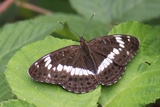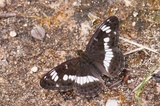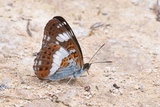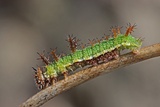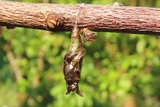Limenitis camilla (Linnaeus, 1764) Species
Last modified: May 28, 2024, 5:58 p.m.
A widespread but local species in Belgium, it has increased in the north of the country since 2004. Locally common in some parts of the south of the country.
Details
- Classification
- Family: Nymphalidae > Subfamily: Limenitidinae > Tribus: Limenitidini > Genus: Limenitis > Species: Limenitis camilla
- Vernacular names
- Kleine ijsvogelvlinder (NL), White Admiral (EN), Petit Sylvain (FR), Kleiner Eisvogel (DE)
- Synonyms
- Limenitis sibilla (Linnaeus, 1767)
- First mention in Belgium
- De Sélys-Longchamps E. 1837. Catalogue des Lépidoptères ou Papillons de la Belgique, précédé du tableau des Libellulines de ce pays. — — : 1–29. On page 17 (as Liminitis [sic]) Camilla). view page
- Status
-
Native
Distribution
Egg
Eggs are laid on the upperside of the leaves, mostly near the edge.
Caterpillar
Larvae mainly live on Lonicera, mostly in humid locations and in the shade or semi-shade. Before hibernation, the brownish larvae create a typical feeding pattern on the Lonicera leaf where it starts eating from the top but leaves the midrib of the leaf untouched. For hibernation, the larva uses a leaf to create a hibernaculum and after hibernation, the final instars of the larva get their typical green color with reddish spines.
Flight periods
The adults fly in June and July. Sometimes there is a small second generation from end of August to September.
Observed on
- Host plant (species):
- Lonicera periclymenum
The larva lives on Lonicera or Symphoricarpos.
